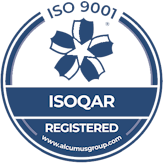How to Choose the Right Test Automation Framework for Your Business?

A crucial process in the software development phase is testing. It might be challenging to select the best QA automation testing services, yet effective test automation depends on it.
The needs of the software market change along with technology. To stay up with agile development, industry participants need to provide quality quickly. This involves creating better items that are delivered to customers quickly.
Do you know that 72% of all businesses get returns and benefits after deploying the right automation testing tool? The other 28% end up using more budget and time.
To run more precise test cases more quickly, software testing teams require a useful test automation framework. Without these technologies, the majority of time, labour, and resources are spent on repetitive tasks like regression testing.
Thus, how can you choose the best tool? Let’s talk about the qualities to search for and things to think about while selecting software testing tools.
In software development, manual testing remains necessary for some project objectives and expectations. Auto testing works well in situations where:
❖Regular repetitions of regression testing are part of your routine.
❖You have several tests that are repeated.
❖Critical functionality cannot be adequately tested by hand.
❖You must mimic several people using the application resources since AUT’s user interface is comparatively reliable.
A collection of guidelines and related resources for creating test cases is known as a test automation test framework. Its goal is to increase engineering operations’ efficiency.
Code norms that you could prevent personally entering, test data dealing with methods and advantages, easily accessible storing for the obtained test outcomes, object repositories, and other information that may be needed to run the tests appropriately are all examples of general guidelines for automation frameworks.
The following are the main benefits of utilizing the Test Automation Framework:
Enhanced Efficiency– By eliminating the need for repeated manual testing chores, the best test automation framework expedites the testing process, resulting in shorter development cycles and quicker feedback.
Consistent and Dependability– Automated tests are consistent in their execution and yield dependable findings since they follow the same procedures each time. Human mistakes are therefore less likely to happen and test findings are more trustworthy.
Code Reusability– Frameworks for test automation encourage the reusing of test components and scripts. By developing reusable testing scenarios and libraries, testers may save effort and redundancy by employing a modular approach.
Because automation frameworks are well-integrated with CI/CD pipelines, code updates can be continuously tested, ensuring code stability and quality throughout the entire development lifecycle.
Each stage of the process is documented by a single individual who is performing linear scripting by hand. It takes a long time to run this framework, which is called the Record or Playback framework. It may be a straightforward method of recording a script and does not need automation knowledge, but it is not suitable for script reuse. In the future, you would need to hand-code the evaluation script to execute the software test automation framework, and upkeep takes time.
For the framework to function, a number of modules must exist. You would need to create unique scripts for every module and operate with them in order to maximize the automation test’s effectiveness. If changes were made to the way the application functions, the modules would remain unaffected. Until the scripts are changed manually, they are unaffected.
This offers a cost-effective management strategy since combining several modules results in an extensive level of modularization. Productivity is still at its highest level. Individually altering the test results, however, might take a lot of time and work.
Before a successful result is obtained, a number of tests must be carried out while assessing an automation framework. In these situations, you may need to modify the test data in order to try to reach a different conclusion. You can save the test data on an external disk using the Data-Driven Testing Framework, and you can access it subsequently to add an additional script to the test case.
Usually regarded as a variation of the information-driven reporting framework, the keyword-driven test framework safely maintains the set of codes while retrieving your test data from an external source. These codes, also referred to as “keywords,” are able to alter the test script so that further inferences based on the test framework can be made. Additionally, these keywords effectively determine the tasks that each program completes.
To get the most out of the aforementioned mobile test automation framework, the hybrid testing architecture integrates the data-driven with keyword-driven frameworks. It is the perfect automation framework, giving you more room to be more productive and achieve more success.
A software development process called behavior-driven development, or BDD places a strong emphasis on cooperation between testers, developers, and company stakeholders.
BDD focuses on utilizing scenarios and examples to clearly and understandably define an application’s behavior. BDD ensures a clear, common knowledge of requirements by writing tests in the “Given-When-Then” pattern using the framework.
The primary players in the software development process that BDD unites are the Business, Development, and QA teams. All parties involved may comprehend and concur on the intended behavior of the program by using tests that are described in simple English.
It is necessary to consider certain project steps when finding software for automation testing. For the sake of time and money on testing, the device you choose should ideally fit the requirements of your project.
Listing your project’s requirements and problems to help you resolve them with the testing tool is the first step. To learn more about the requirements of the specific project, you might pose the following generic questions:
❖ The language of the application- If you want to use a specific programming language for testing automation, this component is essential.
❖ Application kind that has to be tested- Are you developing a web application, mobile application, desktop application, or API?
❖ Is cross-device or cross-browser testing necessary? This testing is essential while creating a mobile or web application.
❖ The platforms that require testing include: If using a web application, identify which browsers are supported. List the mobile operating systems that work with the app if it’s a mobile one, and the same goes for desktop apps.
If you target multiple operating systems, you can either use a separate evaluation UI test automation framework to choose an application that is compatible with both iOS and Android. In terms of programming languages, it is clear from current trends in automation that most undertakings use JavaScript (JS) for various levels and types of testing; if your project is developed on JS, try to use it for automated testing as well.
Making test cases might take a long time. As a result, the software of choice should include characteristics that are easy to use, such as low coding requirements or user-friendly interfaces, which facilitate and speed up script authoring. It will reduce initial setup expenses, saving you precious development hours.
Additionally, not every testing tool is capable of handling every case. By practically automating some test cases, you can make sure the tool you choose meets your goals.
In order to reduce the amount of human labor required once the tests are over, you should also make sure that the script requires little maintenance after it is created.
Certain tools can repair themselves after test cases if you make little changes to the program. Look for resources that allow users to modify tests to fit their own needs and preferences. Every team member may modify scripts to suit their degree of expertise while still carrying out automated testing.
For bigger initiatives with multiple tools used in testing cycles, integration support is essential.
Certain solutions include capabilities that facilitate smooth system-to-system communication, such as API access. This communication avoids data conflicts owing to competing modifications made over time.
Seek solutions that operate with your current frameworks or language libraries and OKR software. Tests that follow industry standards may be swiftly created by your team, using less coding and offering thorough coverage across several platforms.
There are two categories of test automation tools: code-dependent and codeless.
Consequently, it is essential to consider the experience and skill set of your team when selecting a software-automated test solution. While certain tools may require additional training or expertise, others may be easier to use if your employees are already acquainted with the basics..
Look for an outcome that provides comprehensive training materials or tutorials to assist them in rapidly catching up if they have never tested software before.
Before making any decisions, confirm that the tool you have chosen won’t demand any more technical knowledge than your team already has.
When assessing software solutions, budgeting is crucial, and selecting an automation tool is no exception. Depending on the scale and complexity of the project, certain options may not fit within your budget. Before deciding which tool would work best for you, it’s critical to know the extent to which you’re willing to pay. Before you commit to a budget, think about the following:
Time the group will spend acquiring the tool- A short process of learning saves money indirectly by reducing the resources and time that you spend on the tool.
Time dedicated to the automated procedures- If the tool makes it simple to create and maintain test cases, you’ll save money and time.
Cost of hiring staff required for automation: If the validation tool does not necessitate the hiring of qualified personnel for the automation, you will save money.
In order to avoid future needless expenses, make sure the solutions you select fall within the budget you have been given. This will eventually impact how successfully or efficiently you conduct tests across development cycles and what is test automation framework.
A crucial component of any software automated test procedure is reporting. A comprehensive reporting system gives you data on the reliability and caliber of your application or system. You must integrate necessary adjustments to ensure that each test is successful.
The process starts with the necessary steps. Before using any tools on the project, your first task should be to clearly comprehend what is expected of you. It indicates that a particular problem or problem should be the focus of the testing methodology.
Every framework available on the market has pros and cons; it all relies on your specific project, the solution, and the method for developing software.
Additionally, search for features that allow you to trace changes over time, such as a revision control system. With the help of these tools, you may go back in history and contrast earlier iterations with the most recent ones, perfect for debugging!
Additionally, make sure the tool of choice has automatic alerts for any project updates. During testing task cycles, team members from various departments or locations will be updated on progress without having to manually check.
In the end, these procedures serve to improve productivity while enabling your team to work together more successfully.
When choosing the optimal choice for your project, pilot testing remains a crucial consideration. It removes the requirement for manual setup or configuration whenever anything new has to be tested by enabling your team to use test features written in one environment in another.
It is essential that you consider getting feedback from your team. Evaluate all the feedback from each team and consider what works for you and what does not. List out all features of QA automation testing services that are in your favour, and what are not. You should also analyze and compare every feature.
This is where your choosing procedure ends. Now you have complete information to do with a decision.
The quality assurance staff should be well-versed in the automation testing services, be aware of all the solution’s advantages and disadvantages, and maintain a cost-benefit equilibrium. You should take the time to carefully consider all of the information you have gathered since this choice has a significant impact on the task, the testing procedure, and the business objectives.
One of the best ways to increase the efficacy and efficiency of your project is to automate software testing. Making sure a tool fits your needs is the best method to select one.
Make sure your testing crew has access to round-the-clock assistance in addition to the technical features in case they run into any problems. In the end, your automation testing services ought to improve testing effectiveness, enabling your team to provide the best possible product in a timely manner.
Subscribe to our newsletter for some hand-picked insights and trends! Join our community and be the first to know about what's exciting in software testing.
Welcome to the testing tales that explore the depths of software quality assurance. Find valuable insights, industry trends, and best practices for professionals and enthusiasts.

Fill out and submit the form below, we will get back to you with a plan.
 CRN:
22318-Q15-001
CRN:
22318-Q15-001 CRN:22318-ISN-001
CRN:22318-ISN-001 CRN:22318-IST-001
CRN:22318-IST-001